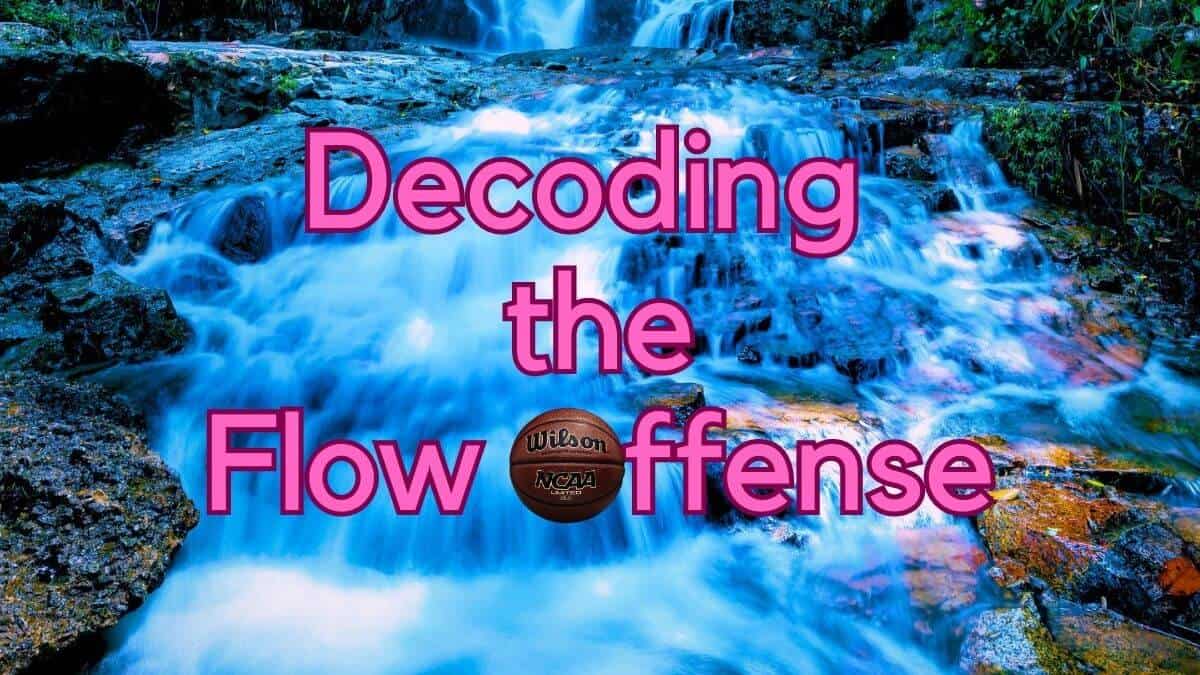Flow offense basketball is confusing. Not because it is particularly difficult to grasp but because use of the term itself seems to be at least a little bit inconsistent.
A lot of the confusion lies in the fact that his is not as much a formal offense as a quality of an offense. It doesn’t help matters that, more recently, coaches have begun to expand the flow concept into more of a foundational offensive schema.
In this post I will take you through the intricate development of this modern basketball offense. I promise it will start to make sense.
Let’s jump in…
What is the Flow Offense?
So originally the term was used to describe a partially improvisational offense that could flow out of transitions. The ball turns over (usually on a miss) and the offense runs right into an attack without any specific guidance from coaching.
In some uses of the term, ‘flow offense’ seems to just refer to the transitional portion of an offensive set. I’ve found references to the ‘Trailblazers flow offense‘ and the University of Virginia Cavaliers using a ‘flow offense’.
Some earlier mentions of the flow concept are in descriptions of Mike Browns transitional offense sets. This is a sizable collection of moves intended to be run aggressively out of defensive rebounds. As soon as the rebound is had, your guards bolt, taking the defense by surprise, like the lead-up to something like Pistol Action. The FIBA basketball Youtube channel has a good breakdown of these plays.
Mike, as you may know is a former Assistant Coach with the Warriors. More recently he’s been on an absolute rampage as the Head Coach of the Sacramento Kings, taking that franchise all the way from nothing to something.
A handful of coaches have taken these flow concepts and expanded them into a full system. And this is where things get really confusing. We’re taking a loose description of a type of play and turning that into a core offensive philosophy.
There are 2 podcast interviews I’m basing this assertion on. These are interviews with coaches who champion flow as the central concept of their offensive concept. And these 2 interviews do outline a consistent offensive theory.
There’s a full interview on The Basketball Podcast where Skerry himself discusses the flow concept.
Pat Skerry’s Flow Offense
Pat Skerry coaches the Towson Tigers of Maryland. He’s the most outspoken proponent of running a flow game offense as your main offense (at least in terms of generating online content). Skerry leaned on this style of offense to take the Tigers to the greatest single-season turnaround in Division 1 history.
Skerry outlines this offense thoroughly in a Championship Productions video that may well be the best and most comprehensive description of the flow game offense. The 73 minute video is around 40$, but if you’re thinking about implementing this offense, it’s a must.
Check out the Coaching DVD at Championship Productions
Skerry’s system builds off of flow concepts to emphasize transitions off of missed shots and allowing players some freedom to experiment. After all, basketball is a deeply improvisational sport.
Skerry’s players do seem to respond well to this structure.
And yet, don’t you kinda need a plan?
Well yeah, it turns out you do, unless you’re just really really good. And Skerry’s flow offense does stress certain structural features.
Let’s take a look…
Protection Plans
Protection plans are systems designed to guide an offense through situations where an advantage is not present. These moves are the thread that binds your flow offense. You want your team to have some moves that everyone is comfortable with, that pull everyone onto the same page. So Skerry stresses well-developed protection plans, a concept he attributes to Bethel’s Doug Novak.
The Barkley
The Nash
Advantages and Disadvantages
Advantages
- Often unique and difficult to scout for.
- Takes the defense by surprise and spreads them thin.
- The ball movement can create open shots for players on the perimeter.
- Can create mismatches on defense due to constant movement.
Disadvantages
- Requires highly-skilled players.
- Requires a great deal of trust and cohesiveness from your team.
Key Takeaways
Depending on context, the term ‘flow offense’ can either be a description of a specific play or subset of plays, or it can also refer to a more fully-baked offensive philosophy.
In either case, it typically designates a highly flexible and even improvisational style of play focused on transition action.
This is a relatively modern style of play, but it has certainly proven valuable. And it can be very advantageous to incorporate elements of this strategy into your gameplan. Another long video describing this strategy.
